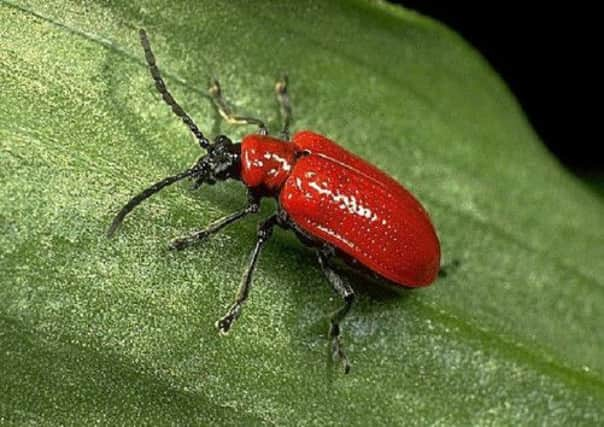Annual battle with the bugs


Apart from spoiling the plants’ appearance, their feeding frenzy (which makes mincemeat of foliage) can result in undersized bulbs developing, so the poor gardener may not even get any lily flowers the following year.
Most people discover the pest when their lilies start to look a little light on foliage; by then, it’s usually too late. So it’s far better to watch for early signs, particularly the tell-tale clusters of orange-red, sausage-shaped eggs on the undersides of leaves.
Advertisement
Hide AdAdvertisement
Hide AdThe larvae are reddish-brown grubs with black heads, and they are dirty little beggars, often hidden under their own wet black excrement.
Young grubs graze the underside of leaves, resulting in white or brown dried-up patches. The older grubs eat entire leaves, while the adult beetles make holes in the leaves and also feed on petals and seed pods. And they don’t confine their activities to just lilies – other plants can also suffer.
So, if you aren’t already doing so, start checking your lilies. If you spot any beetles or eggs, and there aren’t too many of them, pick them off by hand, but be careful not to drop any of the adults onto the compost or they’ll just clamber back onto their host and start eating and laying more eggs.
If there are too many of the pests to deal with by hand, spray the whole plant with something like the BugClear Ultra Gun! – the active ingredient gets inside the plant to give pretty effective results.
Advertisement
Hide AdAdvertisement
Hide AdUnfortunately, the battle against the red lily beetle is an annual affair – the adults go down into the soil and leaf litter in the autumn and overwinter away from prying eyes, and there is no advantage to be gained in trying to treat the soil below lily plants because the little pests could be anywhere.
The beetles begin emerging on sunny days in late March and April when they hunt out lily leaves on which to lay their eggs and feed. The eggs hatch, the larvae go into the soil to pupate and the next generation of adult beetles emerges from mid-summer onwards to join the feast. Thankfully, they don’t produce any eggs until the following year, but they still need to be dealt with as soon as they’re spotted. Good hunting.